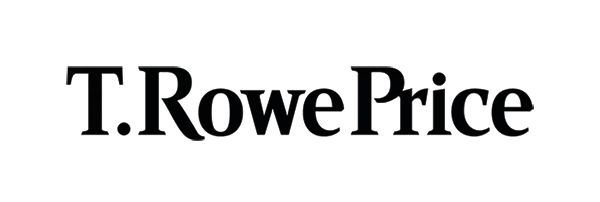Global fixed income: opportunities and challenges in 2024
The outlook for bonds within portfolios

There has plenty of bond issuance in 2023 and 2024 so far, which has proved to be good news for investors looking for a steady income stream that is distinct from cash and offers an attractive investment within portfolios.
According to consultancy PWC, there was more than €799bn (£683.9bn) total corporate debt raised in Europe alone in 2023, compared with €644bn in 2022.
But how long can this bond bonanza last, and where might the fixed income challenges and opportunities for investors lie when it comes to the rest of 2024?
Already some commentators are questioning what the US will do and whether central banks are as ready to shift on their rate stance as markets expect.
After all, there is the spectre of inflation again this year, after the UN issued a warning note over the disruption to the global supply chain caused by continuing military activity in the Middle East and around the Red Sea.
Any significant uptick in inflation will not lead to rate cuts; indeed, banks may even sneak another rate rise in – and this would once again prove favourable for savers and government bond investors.
But what are the other challenges and opportunities in fixed income? The following CPD feature aims to explore these checks and balances and the implications for your clients' portfolios.
simoney.kyriakou@ft.com
Global fixed income: opportunities and challenges in 2024


(Karolina Grabowska via Pexels)
(Karolina Grabowska via Pexels)

(Pixabay/Pexels)
(Pixabay/Pexels)

Understanding how bond allocation fits within a portfolio can be a puzzle at times. (Pixabay/Pexels)
Understanding how bond allocation fits within a portfolio can be a puzzle at times. (Pixabay/Pexels)
For many investors, 2023 was the year when the bond market started to look interesting again.
High inflation and rising interest rates, both considered kryptonite for fixed income investors, had likely created heavy losses for existing bondholders for most of the year, but by the autumn, commentators were branding it the most attractive entry point into the market in a lifetime.
Some £18bn was invested in government bonds (UK and US) in 2023, according to data from Morningstar, and advice firms like Quilter and Evelyn Partners began increasing their fixed income allocations for clients.
Yields were still high – the US 10-year Treasury had a yield of nearly 5 per cent in November, while the 10-year gilt paid 4.5 per cent – but central banks were hinting that they were reaching the peak of interest rates. Better-than-expected inflation data spurred on the market’s forecasts that rate cuts were imminent.
Fast-forward to 2024, and bond markets are still trying to predict and price in the beginning of a rate cut cycle.
So, against that backdrop, what is the outlook for global fixed income in 2024? What are the opportunities, and what are the challenges?
This guide will explore the outlook for the global fixed income market, and comes with an indicative 30 minutes of CPD.
A different place
Fixed income investors are looking at a very different market to last year, even if it might not seem that way on the surface.
Both gilt and treasury yields are slightly higher now than they were at the start of 2023, meaning they offer more value now than they did before.
Gilts offer 4.31 per cent while treasuries offer 4.31 per cent, which is around their six-month average.
On the corporate side, investment-grade bonds are yielding about 5 per cent, the same as it was a year ago.
Corporate bonds may not be offering as much value as they were, certainly compared to government bonds.
At the high yield end, you can get about 8.4 per cent, down from 9 per cent a year ago.
However, spreads – the extra yield you get for taking on the risk of a corporate bond versus a government bond – have reduced across the corporate bond market.
“Falling spreads suggests that corporate bonds may not be offering as much value as they were, certainly compared to government bonds, because you are now being paid less for the probability of them defaulting,” says Hal Cook, an investment analyst at Hargreaves Lansdown.
“The overall yield available on corporate bonds remains higher than for government bonds, which is what you should expect.”
But what has fundamentally shifted is the economic outlook.
At the start of 2023, central banks were still forecast to increase interest rates, and the Bank of England raised rates by 1.75 percentage points to 5.25 per cent throughout the year.
Now, however, even though central banks are pushing the idea that rates are going to stay 'higher for longer', markets are predicting that we have seen the end of rate rises, and that rates will start to come down throughout 2024.
“A number of risks in the fixed income space have eased since last year,” according to Rufaro Chiriseri, head of fixed income at RBC Wealth Management. “Central banks are now contemplating rate cuts instead of hikes as the downward inflation trend continues to improve, albeit with some recent stubborn price growth data.”
When rates do come down, this will be positive for bond values, and this is a very different outlook to this time last year.
As Frédéric Taché, head of fixed income at St James’s Place, explains: “In terms of context, in early 2023 I still had some people asking me if fixed income was broken as an asset class.”
Why government bonds
Rate cuts can present a good opportunity for fixed income investors, experts have said.
“I believe that the natural consequence for interest rates of 'higher for longer' will be later but larger rate cuts,” says Phil Milburn, co-head of the Liontrust global fixed income team.
“Once economic data, including inflation and labour market indicators, has weakened enough for central banks to start cutting, then I think they will want to rapidly move towards a more neutral policy stance.”
He adds this could be a good opportunity, as while markets might be pricing in the first cuts happening too soon, the eventual extent of cuts was still underestimated in the market.
Tara Jameson, co-manager of the Schroder Global Multi-Asset Portfolios, agrees, saying that an “agile approach” was the best way to navigate the market conditions.
I think they will want to rapidly move towards a more neutral policy stance.
“Markets can move quickly and can be sensitive to central bank tone and inflation surprises,” Jameson adds. “We like yield curve steepening strategies – being positioned for shorter maturities to outperform longer maturities – due to their ability to work across multiple scenarios.”
There was also good reason to opt for gilts or treasuries over equities for some investors, when looking at the opportunity relative to risk.
The equity risk premium, which indicates the additional return investors could anticipate from the stock market, compared to a risk-free 10-year treasury bond, is at its lowest point since 2009.
“At these yield levels, government bonds emerge as an attractive alternative for investors seeking to dial down risk in portfolios,” comments Tom Hopkins, senior portfolio manager at BRI Wealth Management.
“As yields rise, they become increasingly appealing relative to stocks.”
The case for corporate bonds
Falling rates are good for corporate bonds, too, which are in a “sweet spot”, according to experts.
“Corporate bonds are generally in a sweet spot,” says Jameson. “The Goldilocks outlook of ‘not too hot’ and ‘not too cold’ is generally a good one for corporates.”
Investors need to be picky, though. Kenneth Orchard, head of international fixed income at T Rowe Price, suggests that opportunities exist in short-maturity investment-grade corporate bonds.
He says that short-dated bonds were often a better bet than long-dated bonds due to the inverted yield curves.
Orchard also backs European credit based on valuations and the improving economic outlook.
Ian Kenny, partner at the wealth manager Evelyn Partners, agrees. He says: “Corporate bond spreads have been remarkably resilient over the past year and trade tight relative to history.
"US spreads, with more resilient corporate earnings and stronger-than-expected growth, trade tighter than sterling or eurozone spreads.”
In the more risky corporate bond space (typically lending to those companies with a higher credit risk), Orchard says that US leveraged loans offer attractive current yields with no duration risk.
“Although the credit quality of the loan universe deteriorated as short-term interest rates rose, interest rate cuts by the Federal Reserve should provide some relief in the second half of the year,” he explains.
“The market has also been worried about the impact of a slowing economy on issuers. If growth remains resilient, as we expect, credit quality should stabilise.”
Risky business
If falling interest rates are a good opportunity for fixed income investors, the opposite is a risk. While experts (and the market) expect it, there is no guarantee that rates will be cut as anticipated, or even that they will not head further skyward.
“Inflation is still with us, and there are signs that the last mile in the battle against price rises might prove the most difficult to deliver,” says Laith Khalaf, investment analyst at AJ Bell. “That may postpone interest rate cuts.”
If growth remains resilient, as we expect, credit quality should stabilise.
Taché suggests that we could even see rate hikes. He says: “We should be cautious about trying to time these types of events. Economic market data, upcoming elections or real estate will be among many factors that could impact this decision.
"While rate hikes seem unlikely, you shouldn’t consider this event as a 0 per cent probability.”
A further issue is that if central banks do behave as expected, then much (if not all) of this is fully priced in by the market. This is a particular problem for gilts or treasuries.
“Expectations of a soft economic landing are fully priced in by financial markets,” says Orchard. “With the market pricing significant cuts in policy rates by most major central banks, upside surprises to either inflation or economic growth could potentially lead to meaningful retracements in bond prices.”
When it comes to corporate bonds, part of the risk is that credit spreads were “priced for perfection”, according to Milburn. Since November 2023, spreads have tightened to historic levels.
When looking at corporate bonds, investors should look at excess returns (the spread). When credit spreads are tight, it does not take a lot to erode the extra yield you get from investing in the corporate bond compared to a risk-free government bond.
On top of this, corporate bonds run the risk of defaults – especially when economic conditions are uncertain.
“While a ‘soft landing’ in the US is probable, it’s difficult to ignore the warning signs around a potential recession as tighter financial conditions bite,” explains Hopkins.
“Companies that will be refinancing their debt at a higher cost of capital face larger interest bills, which could risk company earnings and even result in default.
"Therefore it would be prudent for investors to stick to the higher quality corporate bond issuers.”
How to manage it
For most investors, bonds act as a diversifier to equities. The main reason for this is that they tend to react differently to the same economic situation.
CJ Cowan, portfolio manager at Quilter Investors, says that higher yields could improve the bond market’s ability to fulfil this diversification role.
“Higher starting yields mean more potential for a bond rally in a very negative economic scenario. If US growth were to turn materially lower and inflation keeps moderating to target, or even below target in a recessionary scenario, then this is an environment where bonds should perform well."
He adds: “Meanwhile, risk assets (such as equities) would struggle against this backdrop, so bonds would be a nice downside buffer for your portfolio.”
UK gilts or US treasuries are typically the best type of bonds for diversification, but index-link bonds could also work. Corporate bonds may act similarly to equities, but can offer growth at times when the stock market plateaus.
This diversification benefit, plus the higher yields and opportunity for capital growth, make bonds a good bet for many investors, according to analysts.
“Investors looking to dial down risk in portfolios while still generating returns should consider fixed income investment,” says Hopkins. “These should provide a measure of capital preservation in times of volatility, and fixed income plays a crucial role by providing stability, income and diversification.”
And while you may have had to give up returns to hold low-risk bonds as a diversifier, today’s higher yields means there is less of a trade-off.
As Cowan comments, while most do not forecast rising inflation or a deep and painful recessionary scenario, holding bonds is now an “economic downside hedge that you get paid to own”.
Imogen Tew is a freelance financial journalist


